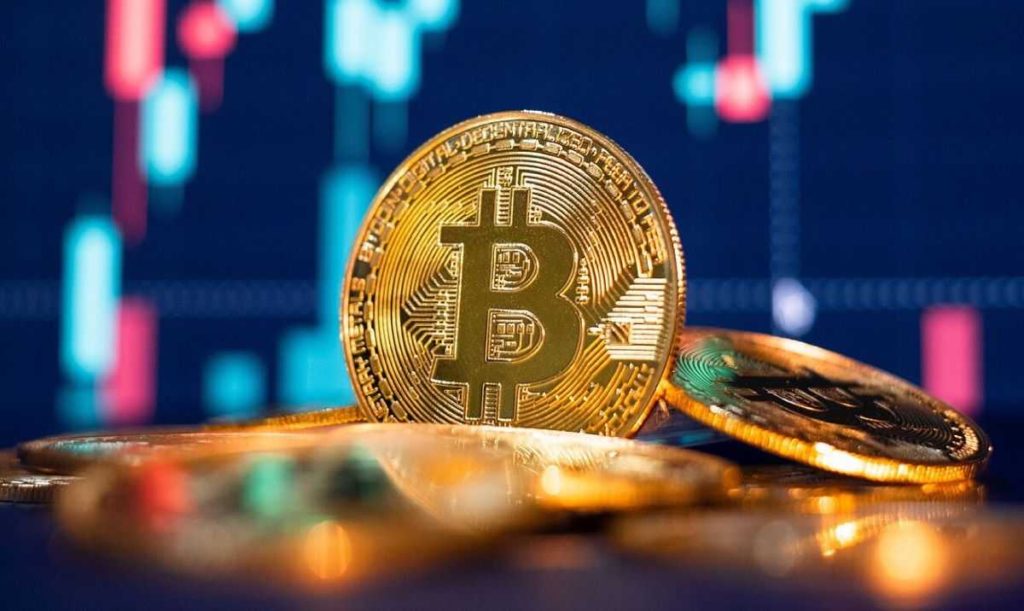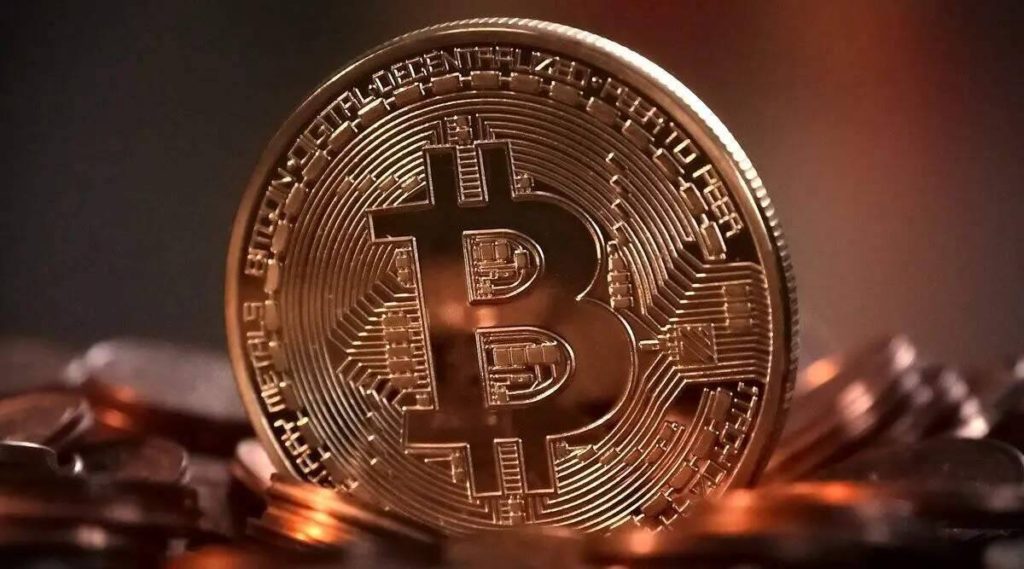The reported sponsorship deal between FTX, a now-defunct cryptocurrency exchange, and Taylor Swift has taken a new turn as recent information suggests that it was former CEO Sam Bankman-Fried (SBF) who requested the deal to be called off, and not the popular singer-songwriter, as previously believed.
According to an article published by The New York Times on July 6, three individuals familiar with the sponsorship deal revealed that Bankman-Fried was the one responsible for ending the agreement worth approximately $100 million with Swift before FTX filed for bankruptcy.
Swift’s team had reportedly agreed to the deal after more than six months of negotiations, only to be left frustrated and disappointed when SBF abruptly canceled it.
This revelation contradicts the narrative presented by various media outlets, which had previously suggested that Swift’s team had diligently assessed the FTX deal before withdrawing.
READ MORE: Crypto Investor Discovers $322,000 Worth of Ether (ETH)
Notably, several celebrities such as Tom Brady and Stephen Curry, along with other prominent figures, have faced legal scrutiny following the collapse of the exchange.
Some of them have been named in class-action lawsuits filed by disgruntled FTX investors.
Before the news of the potential FTX deal emerged, Taylor Swift had remained relatively detached from the cryptocurrency space.
However, she is no stranger to the concept of owning one’s own data, as evidenced by her famous decision to re-record and re-release many of her albums in 2021 following a dispute with one of her previous labels.
This showcases her awareness of the power of retaining control over her music and intellectual property.
Sam Bankman-Fried’s upcoming criminal trial, pertaining to his alleged involvement in fraud at FTX, is scheduled to commence in October.
Meanwhile, the crypto exchange’s bankruptcy case continues to unfold in the United States District Court for the District of Delaware.
The development surrounding the sponsorship deal between FTX and Taylor Swift shines a light on the complexities and controversies surrounding both the crypto industry and celebrity endorsements.
As the legal proceedings progress, further details may emerge, providing a clearer understanding of the events that transpired and the implications for all parties involved.
The Bitcoin Legal Defense Fund (BLDF) argues that a recent report released by the United Kingdom’s Law Commission could undermine a crucial argument made by Craig Wright in his controversial lawsuit against 12 Bitcoin core developers.
The 300-page report, which focuses on digital assets, was published in late June by the Law Commission, an independent organization responsible for reviewing and recommending reforms to UK and Welsh laws.
It includes a classification of fiduciary duty that supports the developers’ defense, asserting that they are not directly responsible for the loss of 111,000 Bitcoin (BTC) valued at approximately $30,170, due to hacking.
READ MORE: Coinbase, Binance and Gemini have least happy employees
In his lawsuit filed in 2021, Craig Wright, the owner of Tulip Trading, claimed that the developers involved in the open-source development of Bitcoin Core owed him a fiduciary duty regarding his financial loss.
Wright is seeking access to the Bitcoin Core blockchain as a means to recover the allegedly stolen funds. He is also known for asserting that he is the pseudonymous creator of Bitcoin, Satoshi Nakamoto.
The UK report delves into the definition of fiduciary duty, identifying recognized categories such as “agents, trustees, partners, company directors, and solicitors.”
The report emphasizes that fiduciary duty rarely exists outside of these established categories. The BLDF, acting as the developers’ legal representative, argues that the defendants do not fall into any of the criteria outlined by the Law Commission.
In a recent blog post, the BLDF stated, “They are not agents, trustees, partners, company directors, or solicitors, and they never undertook or were entrusted with authority to manage the property or make discretionary decisions on behalf of another person.”
Furthermore, the BLDF emphasized that Bitcoin was designed to facilitate transactions between individuals without the need for third-party authority.
The outcome of the Tulip Trading lawsuit could establish a legal precedent for the liability of open-source developers concerning assets.
The trial is expected to take place in 2024 and could have far-reaching implications for the community of open-source developers, as 97% of the world’s software programs are open-sourced, as noted by Jessica Jonas, Chief Legal Officer of the BLDF, during the Bitcoin 2023 conference in May.
The UK Law Commission report also advocates for the creation of a new and distinct category of personal property to accommodate the unique characteristics of digital assets.
Bitcoin Lightning Network development firm, Lightning Labs, has introduced a new toolkit designed to facilitate artificial intelligence (AI) interactions with the Bitcoin network.
The toolkit enables AI applications like OpenAI’s ChatGPT to send, receive, and hold Bitcoin on the network’s layer-2 solution.
By leveraging Lightning, AI developers can enjoy faster, cheaper, and more convenient payment options, while also enabling pay-per-use AI models.
Lightning Labs announced the release of the toolkit on July 6, highlighting the potential for innovation in the field of large language models (LLMs) that can generate human-like responses and perform various tasks.
The tools are built on the “L402 protocol,” which serves as a lightning native authentication mechanism, and employ “Langchain,” a library that simplifies operations involving AI applications.
READ MORE: Coinbase, Binance and Gemini have least happy employees
By providing these tools, Lightning Labs aims to foster the development of more accessible AI infrastructure for both humans and AI agents.
The company also acknowledges the challenge faced by AI developers who lack native web-based payment mechanisms.
Currently, these developers must rely on outdated payment methods like credit cards, resulting in additional costs for users.
Lightning Labs’ solution seeks to address this issue and eliminate the need for traditional payment rails.
Kody Low, a developer at the community payments platform Fedi, highlighted the interoperability between AI and Bitcoin for payments during an interview on the Stack Sats podcast.
He emphasized that Bitcoin offers unparalleled solutions for AI monetization and that AI companies have yet to solve their financial challenges.
Despite the promise of the Lightning Network, data from Lightning Network analytics platform 1ML shows that its current capacity stands at 5,432 BTC (approximately $163.5 million).
Additionally, Bitcoin Visuals reports a decline in the number of lightning channels over the past year, dropping from around 80,000 in July 2022 to approximately 70,000 at present.
Lightning Labs’ introduction of these new tools for AI-Bitcoin interactions marks a significant step towards expanding the capabilities and accessibility of AI applications on the Lightning Network.
As the Lightning Network continues to evolve, it has the potential to revolutionize the way AI developers integrate payment systems and monetize their models, ultimately driving further innovation in the field.
Twitter Payments LLC, a subsidiary of Elon Musk’s Twitter social network, has made progress in its venture as it has received money transmitter licenses from Michigan, New Hampshire, and Missouri.
These licenses enable the company to offer transfer services and payment instruments, emphasizing consumer protection in money transmission rather than just the purchase of goods and services.
Although the exact nature of Twitter Payments’ offerings remains uncertain, the company has applied for licenses in all 50 U.S. states.
However, there is no clear timeline for the approval process, and both Musk and CEO Linda Yaccarino have yet to provide substantial details regarding their plans.
According to insiders familiar with the company, Twitter Payments will initially focus on providing fiat currency transaction services, potentially resembling the services offered by Stripe, Venmo, and PayPal.
READ MORE: How A Crypto Trader Turned $900 Into $176,000 With Pepe 2.0
In the future, Twitter Payments reportedly aims to expand its platform to include cryptocurrency services.
Speculations have also surfaced about the company’s intention to introduce its own token through a project known as “Twitter Coin” and the development of its own digital wallet.
Elon Musk’s commitment to making daring decisions is evident in his statement that Twitter would “do lots of dumb things,” aligning with the mantra of the modern tech industry to “move fast and break stuff.”
While these changes have sparked mixed reactions, some changes implemented by Twitter have raised eyebrows.
For instance, the platform limited non-paying users to accessing only 500 posts within a specific timeframe through the rate limiter feature.
Furthermore, the recent restriction that required users to be logged into their Twitter accounts to view posts was quietly rescinded on July 5, according to reports from TechCrunch and Engadget.
As Twitter Payments progresses with its licensing and development, users and industry observers eagerly await further announcements from Elon Musk and Linda Yaccarino, hoping for more clarity on the company’s future plans and potential impact on the financial and cryptocurrency sectors.
On-chain derivatives are predicted to experience significant growth in the decentralized finance (DeFi) sector, according to Henrik Andersson, the Chief Investment Officer of Australian crypto investment firm Apollo Crypto.
In an interview with Cointelegraph, Andersson highlighted the increasing popularity of decentralized spot trading as a catalyst for the growing demand for decentralized derivatives.
Andersson emphasized that while decentralized spot exchanges have been gaining market share from centralized exchanges for the past six years, decentralized perpetuals and futures trading are relatively new, presenting a high-growth opportunity for on-chain derivatives.
This trend has been further accentuated by the surge in daily trading volume on decentralized exchanges (DEXs) during the memecoin frenzy in May, which briefly surpassed that of established centralized crypto exchanges like Coinbase.
Additionally, the trading volumes on DEXs spiked by over 400% following regulatory actions against Binance and Coinbase in June.
READ MORE: Law Firm Seeks Huge Compensation From Voyager Digital’s Creditors
Andersson revealed that Uniswap, a leading DEX, has been trading more daily volume than Coinbase over the past year, and DEXs have been steadily gaining ground in terms of overall market share.
He pointed out that monthly spot trading volumes on DEXs have exceeded $50 billion.
Furthermore, Andersson anticipated that the trend of futures-heavy trading seen in centralized exchanges would also be replicated in DeFi, making on-chain derivatives the best product-market fit for the DeFi space in years.
He noted that futures trading accounted for nearly 80% of the entire crypto market’s trading volume on centralized exchanges in June.
In addition to on-chain derivatives, Andersson mentioned two emerging market sectors that have caught his attention.
The first is NFTFi, which combines non-fungible tokens (NFTs) and DeFi, enabling investors to rent, borrow, fractionalize, create derivatives, and establish prediction markets based on NFTs.
Andersson believed that NFTs would be utilized for a wider range of functions within the DeFi space due to their strong investment narrative.
The second emerging theme mentioned by Andersson is LSDFi, which leverages liquid staking derivative (LSD) tokens, such as Lido Staked ETH (stETH) and Rocket Pool ETH (rETH), allowing investors to borrow, speculate, and hedge against their LSD tokens.
The popularity of LSDs has grown rapidly, with LSD protocols surpassing DEXs in terms of total value locked (TVL) after Ethereum’s Shapella upgrade.
Andersson acknowledged the need to address the issue of centralization among certain staking providers in the LSD space and called for a more balanced array of protocols to ensure a diversified environment.
In conclusion, Andersson’s insights highlight the potential of on-chain derivatives as a significant growth sector within DeFi.
He also recognized the emerging sectors of NFTFi and LSDFi as areas of interest, indicating their potential impact on the DeFi landscape.
In a remarkable turn of events on July 5, a fortunate cryptocurrency investor unexpectedly found themselves $322,000 richer.
Conor Grogan, the head of product at Coinbase, took to Twitter to share the story of how he stumbled upon dormant crypto assets and successfully contacted the unknowing owner.
Grogan explained that when the Ethereum blockchain underwent a fork in 2016, creating Ethereum Classic (ETC), anyone holding the standard Ether (ETH) on-chain was airdropped an equal amount of ETC.
However, many investors never touched these newly acquired funds.
Grogan remarked that it is common for individuals to forget about funds on-chain or fail to keep track of airdrops.
READ MORE: Hong Kong Threatening US As It Emerges As Preferred Web3 Destination
He revealed that he had previously recovered six-figure sums for investors in similar situations, such as notifying a Twitter user of 23 ETH that had remained untouched.
Tracking down these wallets proved to be a challenging task. Grogan began by meticulously searching the “ETC rich list” for accounts that had never accessed their ETC.
After identifying around 20 addresses holding over $250,000 worth of ETC, he painstakingly examined each one to find a means of communication.
Grogan faced multiple dead ends in most cases until he stumbled upon an address with the prefix “0x475.”
Curiously, this wallet contained a cryptocurrency called eosDAC (EOSDAC), which had been airdropped to Ethereum holders in 2018.
Armed with this newfound information, Grogan used the airdrop amount and snapshot date to connect with the owner’s EOS wallet.
As Grogan delved deeper, he discovered that the 0x475 ETH address had an intriguing history, which eventually enabled him to uncover the legal name associated with it by scrutinizing legal documents.
In an uplifting conclusion, Grogan successfully reached out to the owner and informed them about their long-forgotten wealth.
Reflecting on the experience, Grogan expressed his hope that he had brightened the owner’s day by reconnecting them with their lost funds.
This tale serves as a reminder of how easy it can be to overlook or lose track of valuable assets in the fast-paced world of cryptocurrencies.
Bitcoin miners experienced a significant boost in earnings during the second quarter of 2023, as transaction fees reached a staggering $184 million.
This figure surpasses the total transaction fee earnings for the entire year of 2022, showcasing the remarkable growth in profitability.
The latest data from cryptocurrency analytics platform Coin Metrics reveals that this represents a remarkable increase of over 270% from the first quarter of 2023.
Moreover, it marks the first time since the second quarter of 2021 that quarterly transaction fees have exceeded $100 million.
READ MORE: How A Crypto Trader Turned $900 Into $176,000 With Pepe 2.0
This surge in fees can be attributed to two key factors. Firstly, Bitcoin’s price surge played a crucial role in bolstering top-line revenues.
Additionally, the introduction of BRC-20, a new token standard on the Bitcoin network, has expanded the possibilities for various use cases and accelerated the scalability of the network through the Lightning Network.
It is important to note that transaction fees accounted for only 7.7% of the total $2.4 billion earned by miners throughout the quarter.
The majority of their earnings still came from Bitcoin block rewards, which currently stand at 6.25 BTC per solved block.
However, this reward is set to decrease to 3.125 BTC following the network’s anticipated halving in May 2024.
Beyond their substantial earnings, Bitcoin miners had additional reasons to celebrate in Q2.
The blocking of the proposed Digital Asset Mining Energy tax by the Biden administration was a notable win for the mining industry.
Additionally, U.S.-based miners benefited from favorable macroeconomic conditions, leading to lower electricity prices due to receding inflation pressures.
Despite these positive developments, the mining fee market has become increasingly competitive as Bitcoin’s hash rate continues to reach new all-time highs.
Coin Metrics reports that the network’s efficiency has improved with the adoption of advanced ASICs like the S19 XP.
The fierce competition underscores the evolving landscape of Bitcoin mining and highlights the need for miners to stay ahead in this rapidly changing environment.
In conclusion, Bitcoin miners enjoyed a highly profitable second quarter of 2023, with transaction fees soaring to $184 million.
This milestone reflects the substantial growth in Bitcoin’s value and the emergence of new token standards.
However, miners must remain vigilant as competition intensifies, and they face the challenges of future halvings and a dynamic mining industry.
Hong Kong is positioning itself as an attractive destination for businesses in the blockchain, cryptocurrency, and Web3 sectors, potentially drawing them away from the United States, according to industry experts.
The city has taken several steps in the past year to foster the development of Web3 and enable retail investment in cryptocurrencies, including the establishment of the Task Force on Promoting Web3 Development.
Yat Siu, co-founder of Web3 investment firm Animoca Brands, has been invited to be an advisor to the task force, which will engage directly with government officials and financial regulators.
Siu emphasized Hong Kong’s evolving attitude towards crypto and Web3, stating that the city is well-positioned to attract startups and established firms.
READ MORE: Empowering the Future of Finance: A Deep Dive into AllianceBlock
In contrast, he noted that many US firms operate under a cloud of regulatory uncertainty, citing recent charges filed by the US Securities and Exchange Commission against Binance.US and Coinbase for alleged unregistered securities offerings.
Hong Kong has seized the opportunity to take a leadership role in driving Web3 development, while the US has seemingly hindered its potential to be a top destination for companies in the sector.
Previously, Hong Kong had maintained a distance from the cryptocurrency space, with restrictive policies only recently overturned after consultations with industry proponents.
Siu commended the government’s agility in adapting its stance towards the industry and its willingness to include numerous Web3 proponents in the task force.
The Web3 task force in Hong Kong is expected to be dynamic, with regular meetings involving various crypto, blockchain, and Web3 working groups.
Task force members have entered into a two-year agreement with the Hong Kong government to provide advice on fostering industry growth.
Siu envisions the task force playing a vital role in driving sector development by nurturing talent and promoting blockchain solutions in educational institutions.
Hong Kong’s efforts to cultivate the Web3 sector have yielded positive results.
Cyberport, a technology-focused hub, has attracted over 150 Web3 firms this year, and companies are reportedly investing substantial amounts, ranging from $2 million to $25 million, to acquire virtual asset service provider licenses in the city.
With its proactive approach, regulatory clarity, and support for innovation, Hong Kong is carving out a distinct advantage in the global landscape of blockchain, cryptocurrencies, and Web3, potentially luring businesses away from the US and positioning itself as a leading hub for these emerging technologies.
In a remarkable turn of events, a cryptocurrency trader has transformed a modest $900 investment into an astonishing $176,000 windfall through an intriguing meme-inspired digital currency called Pepe 2.0 ($PEPE2).
This cryptocurrency appears to be a spin-off of the well-known meme-inspired coin, $PEPE.
$PEPE itself draws inspiration from the infamous meme and cartoon character, Pepe the Frog, and was introduced to the market on April 17, 2023.
Despite concerns regarding the contract owner’s potential ability to manipulate transaction taxes and blacklist functions, $PEPE has experienced an extraordinary surge in its market value.
READ MORE: NFT Blue Chip Collections Plummet to Near Two-Year Lows
It has even secured a place among the top 100 digital assets following listings on various centralized exchanges.
Previously, another fortunate cryptocurrency investor managed to convert a mere 0.125 ETH investment in $PEPE into an astounding $1.14 million in just a matter of days, capitalizing on the right timing.
Now, history appears to be repeating itself with $PEPE2, as an investor on the Ethereum ($ETH) network has swiftly turned $900 into $176,000 within a mere 24 hours.
This remarkable feat was accomplished through over 40 trades, with each trade involving 2 $ETH worth of the newly launched meme-inspired cryptocurrency.
The investor initially acquired 8.3 trillion $PEPE2 tokens on June 28 and sold them later when their value skyrocketed exponentially.
However, caution is advised as Bubblemaps, a data visualization platform, recently revealed that an early adopter, who holds a significant amount of Pepe 2.0, is beginning to offload their assets.
This development could potentially trigger a chain reaction, as this individual wields substantial influence over the asset’s price and possesses a wallet that is directly linked to the deployer.
It is worth noting that this is not the first instance of a trader achieving astounding returns by trading memecoins.
For instance, a trader known as a “meme lord” turned $30,000 worth of digital assets into approximately $450,000 over three years by being an early investor in several memecoins, including popular ones like Shiba Inu ($SHIB) and Pepe Coin ($PEPE).
While trading memecoins can be potentially lucrative, it also carries significant risks that should not be underestimated.
These tokens tend to exhibit high volatility, with their values capable of surging or crashing dramatically within short periods.
Additionally, they often lack the underlying technology or utility that supports more established cryptocurrencies.
Therefore, investors should exercise caution and conduct thorough research before venturing into the world of memecoins, considering both the potential rewards and risks associated with these speculative assets.
The meme-inspired cryptocurrency Shiba Inu ($SHIB) has experienced remarkable growth in recent months, with a surge in daily new addresses during the second quarter of this year.
Data from IntoTheBlock, a prominent cryptocurrency analytics firm, reveals that on June 27, the daily new addresses for Shiba Inu exceeded 4,000, marking an astounding 357% increase compared to the 877 new addresses recorded on May 21.
Additionally, Shiba Inu has witnessed a flurry of activity on its layer-2 scaling solution testnet, Shibarium.
The testnet, called Puppynet, recently achieved a significant milestone of 25 million transactions.
PuppyScan, a dedicated block explorer for Shiba Inu’s network, reports that Puppynet processes approximately 270,000 transactions per day, contributing to the overall growth of the ecosystem.
READ MORE: Co-Founders of Collapsed Three Arrows Capital Pledge Donation to Creditors
Earlier this month, CryptoGlobe reported that Puppynet had surpassed 20 million transactions, with around 16 million wallet addresses involved in fund movement on the network.
Since then, the number of wallets on Puppynet has surpassed 17 million, indicating increasing interest and engagement within the Shiba Inu community.
Part of the surge in activity and interest can be attributed to a cryptic message shared by Shytoshi Kusama, the enigmatic lead developer of SHIB.
Kusama, who has played a pivotal role in advancing the development of Shiba Inu, posted a 19-second video clip on Twitter hinting at upcoming developments within the ecosystem.
Crypto analyst Austin Hilton delved into the developments surrounding the Shiba Inu ecosystem, including its associated tokens $BONE and $LEASH, in a recent YouTube video.
Hilton revealed his accumulation of the former token, shedding light on the growing interest among enthusiasts and investors.
Shibarium represents a significant milestone for the Shiba Inu ecosystem, as its native token currently operates on the Ethereum network.
While Ethereum is renowned for its high level of security and decentralization, it faces limitations in terms of scalability and transaction throughput.
The implementation of Shibarium addresses these concerns and paves the way for a more efficient and scalable infrastructure for the Shiba Inu ecosystem.
Overall, Shiba Inu’s explosive growth in daily new addresses and the milestone achieved by the Shibarium testnet highlight the increasing popularity and potential of this meme-inspired cryptocurrency.












